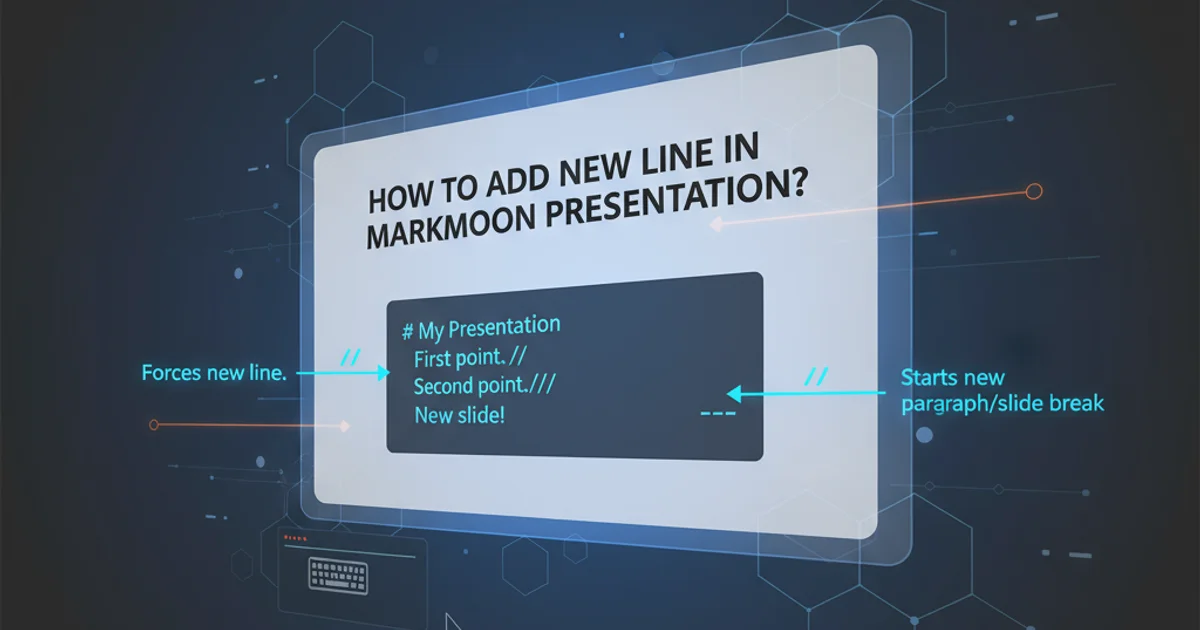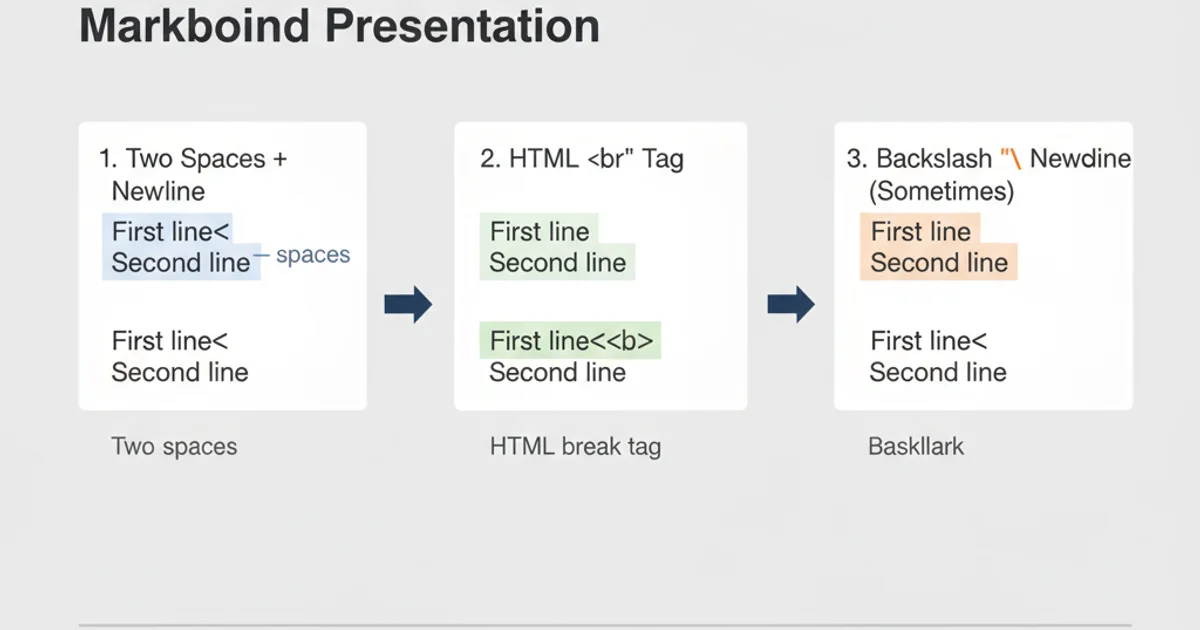How to add new line in Markdown presentation?
Categories:
Mastering Newlines in Markdown Presentations

Learn how to effectively add new lines and control line breaks in Markdown and R Markdown presentations for clear and readable slides.
Creating presentations with Markdown, especially in environments like R Markdown, offers a streamlined way to focus on content rather than formatting. However, a common challenge arises when trying to control line breaks and add new lines precisely. Unlike word processors, Markdown interprets newlines differently, which can lead to unexpected formatting in your slides. This article will guide you through the various methods to ensure your text breaks exactly where you intend it to, enhancing the readability and aesthetic of your presentations.
Understanding Markdown's Line Break Behavior
Markdown's philosophy is to be easy to read and write. This often means it tries to be smart about how it handles line breaks. A single newline character in your source Markdown usually doesn't translate to a visible line break in the rendered output. Instead, it's often treated as a space. To force a new line, you need to use specific syntax. This behavior is consistent across most Markdown renderers, including those used for presentations.
flowchart TD
A[Markdown Source] --> B{Single Newline?}
B -->|Yes| C[Rendered as Space]
B -->|No| D{Two Spaces + Newline?}
D -->|Yes| E[Forced Line Break]
D -->|No| F{Empty Line?}
F -->|Yes| G[New Paragraph]
F -->|No| H[Continue on Same Line]Markdown Line Break Interpretation Flow
Methods for Adding New Lines
There are several reliable ways to insert new lines in your Markdown presentation content. The best method often depends on the context and the specific Markdown renderer being used, though some are more universally accepted than others.
1. Using Two Spaces Followed by a Newline
This is the most common and widely supported method for a soft line break. Simply add two spaces at the end of a line, then press Enter to go to the next line. The rendered output will show a line break without starting a new paragraph.
2. Using a Backslash Followed by a Newline
Some Markdown renderers, particularly those that support CommonMark or GitHub Flavored Markdown (GFM), allow a backslash \ at the end of a line to force a line break. This is often considered cleaner than two spaces, but its support can vary.
3. Using an Empty Line for a New Paragraph
To create a new paragraph (which typically includes more vertical spacing than a simple line break), simply leave a completely blank line between two blocks of text. This is standard Markdown behavior for paragraph separation.
4. Using HTML <br> Tag
Since Markdown often supports inline HTML, you can directly insert an HTML <br> tag to force a line break. This method is highly reliable across almost all Markdown renderers, but it breaks the 'pure Markdown' aesthetic.
This is the first line.
This is the second line using two spaces.
This is a new paragraph.
This is another line.\
This line uses a backslash for a break.
This line uses an HTML <br> tag.<br>
This is the next line.
Examples of different newline methods in Markdown
ioslides_presentation or beamer_presentation), the two-space method and empty lines are generally the most reliable. The HTML <br> tag also works consistently.Specific Considerations for R Markdown Presentations
R Markdown leverages Pandoc for rendering, which is quite robust in its Markdown interpretation. For presentations generated with ioslides_presentation, revealjs::revealjs_presentation, or beamer_presentation, the standard Markdown rules apply. However, the visual impact of line breaks can differ slightly based on the presentation theme and CSS. Always test your line breaks in the final rendered output.

Visualizing line breaks in an R Markdown presentation.